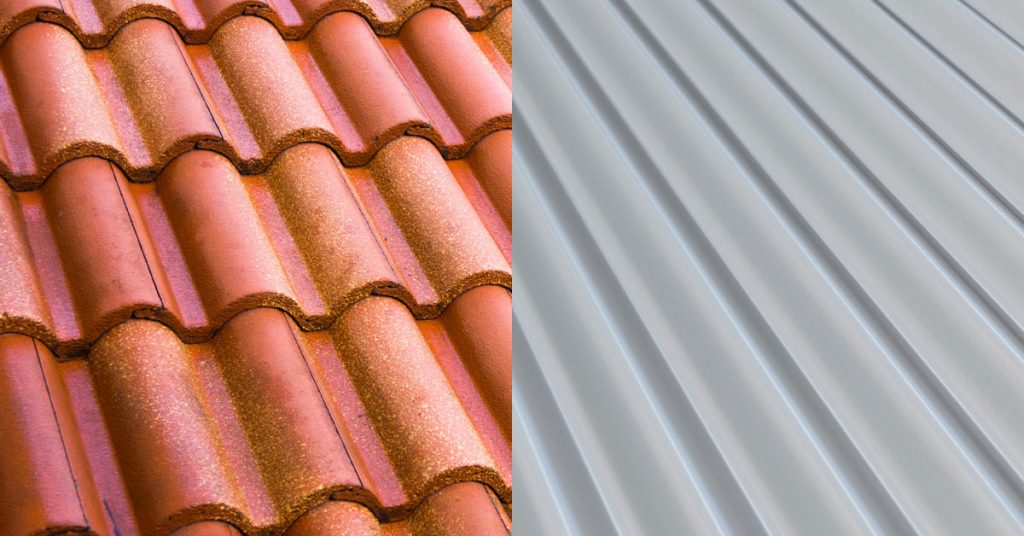Colorbond Roofs Vs Concrete Tiles
There are many advantages to using roofing tiles over concrete. Concrete is one of the most commonly used building materials in the world and it is also very cheap. However, the process of cementing together a large amount of rock with water can be challenging. The result can be slabs that are hard, brittle and slow to set. When compared to slate or shingles, slate has more natural colors which make it more aesthetically pleasing. The downside is that it is much more expensive than roof tiles.

What Is Colorbond Roof?
Colorbond roofing is a process by which roofing material is bonded to another material such as asphalt shingle or felt. The two materials are mixed together in a special kiln and then baked at a high temperature to form a strong bond between the materials. The heat from the kiln helps expand the air in the kiln so that more materials can be utilized instead of being stuck in a warehouse undiscovered by the elements. The bond between roofing tile and asphalt shingle roofing is stronger than that between roofing tiles and felt.
What Is Concrete Roofing?
A concrete tile roof is a popular roofing material because it is inexpensive, easy to install, and durable. However, it is not a good roofing material because it is lightweight, less durable than slate, and easily eroded. Concrete is made by processing aggregate materials such as stone, brick, or gravel into small rocks. Then, the rocks are mixed with water and lime to make concrete. Concrete is heavier than slate, so a concrete roof would require a shingle roof to match.
How Does Colorbond Roofing Work?
The colorbond process works by bonding two materials together through heat and pressure. One option is to bond shingles to slate. However, with a painted metal roof, the colors will wear off the shingles and the exposed slate will show through. A more durable option would be to bond slate to concrete. This can be done by painting a shingle roof over the top of the concrete.
How Does Concrete Roofing Work?
Concrete is usually mixed with other materials such as gravel, slate, sand, or dirt. The soil may contain rocks or shells that add texture and color to the concrete. Because concrete is less dense than both the soil and the shingle, water runs out from the bottom of the concrete forms into the air. This water surface runoff can then be captured and used to moisten the shingle. After the shingle is in place, the cement mix can be poured under the concrete to harden it. The bonding agent, which is usually a compound such as acrylic or urethane, is then removed to allow the materials to mix freely once more.
Advantages Of Colorbond Roofing
Here are some reasons to use coated steel roofing material:
Easy Install
Tiled roofing is easy to install and require no special tools. All you need are hands.
Durable
Tile roofing is also known as stone- Tile roofs have proven to be very durable. They can handle heavy rainfalls, snow loads, high winds, and sun and weather extremes. Saves
Money
Since there are fewer materials needed for roofing tiles than for concrete, the cost of roofing tiles is often cheaper.
Maintains The Color
The advantage of painted roofs is that it helps to maintain the original color of the shingles.
Disadvantages Of Colorbond Roofing
Here are a few disadvantages of colorbond roofing materials:
Time Consuming
The bonding process takes time and effort. You will need to mix a concrete batch with water, lime, and aggregates. This process is slow, labor intensive, and requires specialized equipment.
Easy To Erode
Because concrete is much less dense than the shingles, water runs out from the bottom of the concrete and forms a layer of water under the shingles. Once this water has soaked through the shingles, you have eroded concrete.
Advantages Of Concrete Roofing
There are many advantages of corrugated metal roofing and concrete tile roof restoration:
Durable
Traditional roofing tiles are heavy, dense, and very strong. It can stand a lot of wear and tear and still be in good condition.
Lightweight
Concrete has lighter roof framing and is easy to work with compared to slate or shingles.
Offers More Insulation
Because concrete is less dense than slate, it can be laid directly on the roof without having to be tiled. This can offer more insulation and better weather protection for your home.
Easy To Clean
Tile roofs are very easy to clean. You can scrub them off with a wire brush or a scrub brush.
No VOCs
Unlike paints used on shingles, which have volatile organic compounds (VOCs) that are harmful to the environment and your health, paints used for concrete are less toxic and better for the environment.
Colorbond Vs Concrete Tiles
Both roofing materials come with their pros and cons. Both can be used on a personal or commercial roof. However, for a variety of reasons, color bond roofing is the better option. It is less costly, more environmentally friendly, and has a longer life than concrete. With these differences being the main factors, it is easy to see why colorbond roofing is the better choice for a roof.
Conclusion
In recent years, the roofing industry has become competitive. There are many advantages to using roofing tiles over conventional roofs. Concrete roofs are very durable and long-lasting. Natural stone and tile are the most popular types of concrete roofing. It is made by combining roofing shingles, slates, and or tiles with aggregate or cement. The roof structure is made with wood shingles, felt, felt-cloth, or paper. Concrete can be painted or Bedford-applied.
The best roofing material is the one that best matches your home’s style, budget, and needs. There are many different types of roofs that can be used on a house. The roof type affects the appearance, ease of maintenance, and the amount of protection your house receives from the weather. Whether you go with a shingle roof or a concrete roof, each has different benefits and disadvantages.



